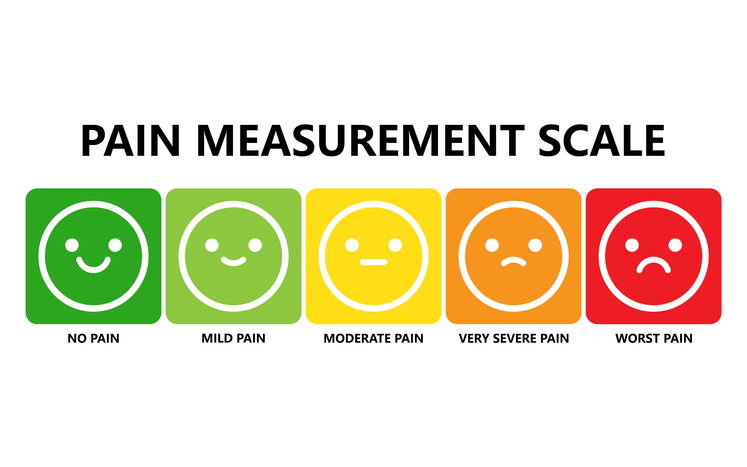Pain
Pain Scales
Pain scales are either unidimensional or multidimensional.
Unidimensional (single-dimensional pain scales) only measure one factor: the intensity of pain. This type of pain scale is extremely useful when gauging acute pain. However, in cases of chronic pain, the information asked and provided can oversimplify the pain experience. Examples of unidimensional pain scales include the Visual Analog Scale (VAS), the Wong-Baker Scale, and Numeric Rating Scales (NRS).
Multidimensional pain scales are more complex and take more time to complete. These scales can measure various factors, such as pain intensity, pain type, pain location, mood changes, anxiety levels, depression symptoms, and everyday functioning. This type of scale is more detailed and a better measure of chronic pain than a single-dimensional scale. Examples of multidimensional pain scales include the McGill Pain Questionnaire (MPQ), the Brief Pain Inventory (BPI), and the Indiana Polyclinic Combined Pain Scale (IPCPS).



















